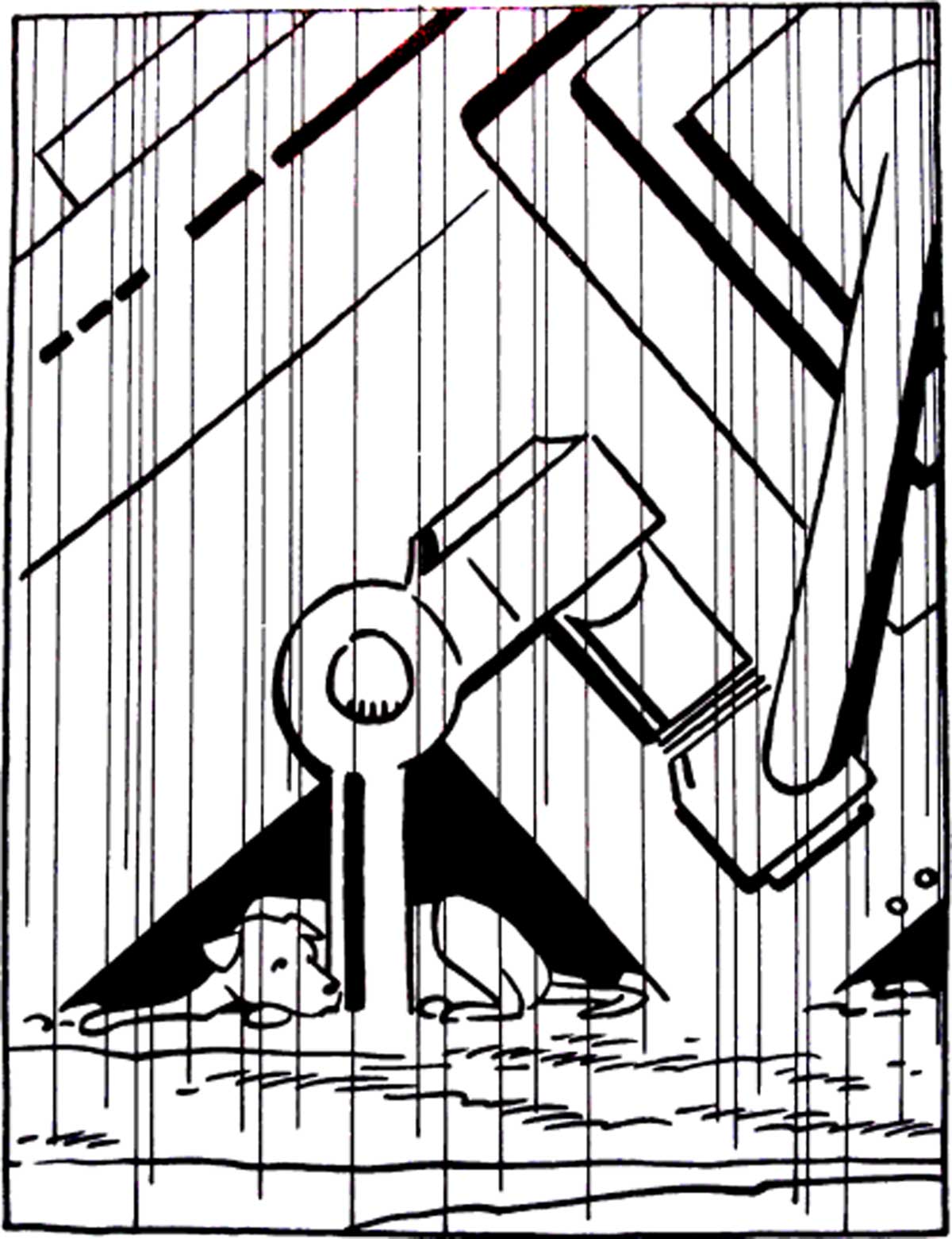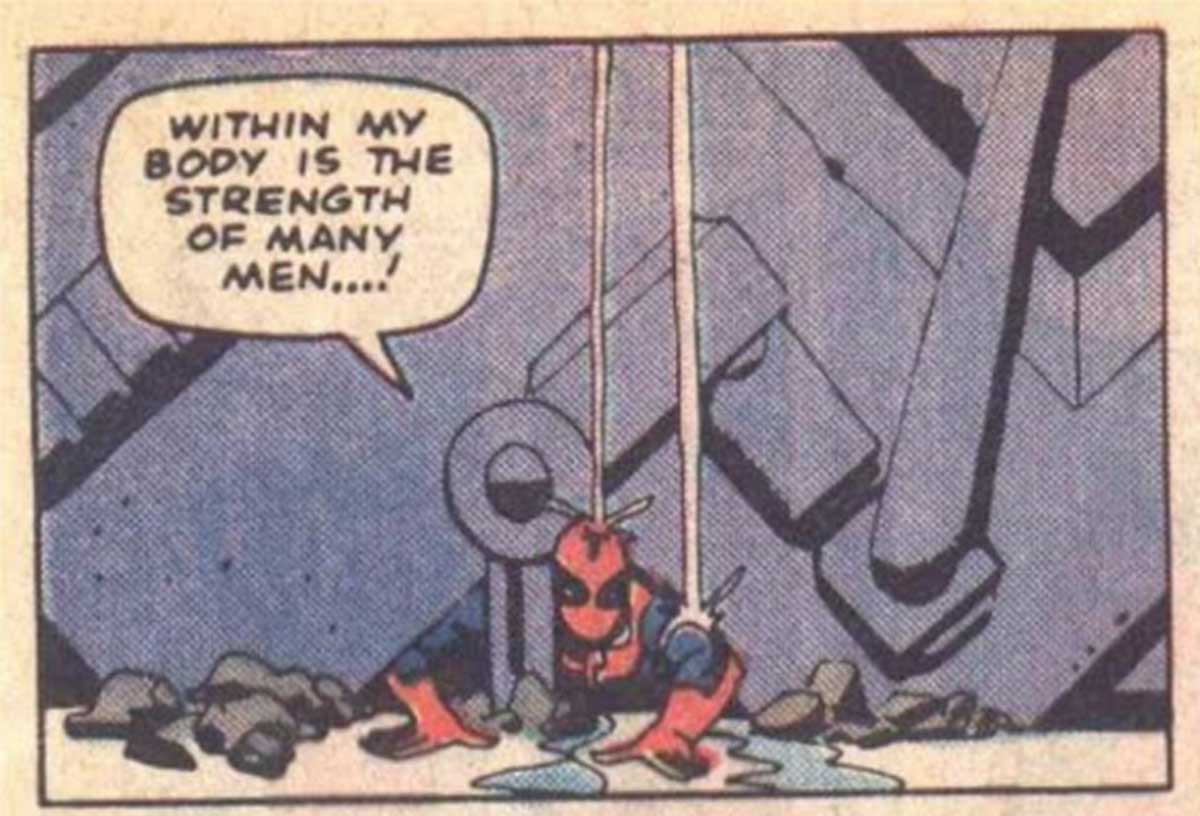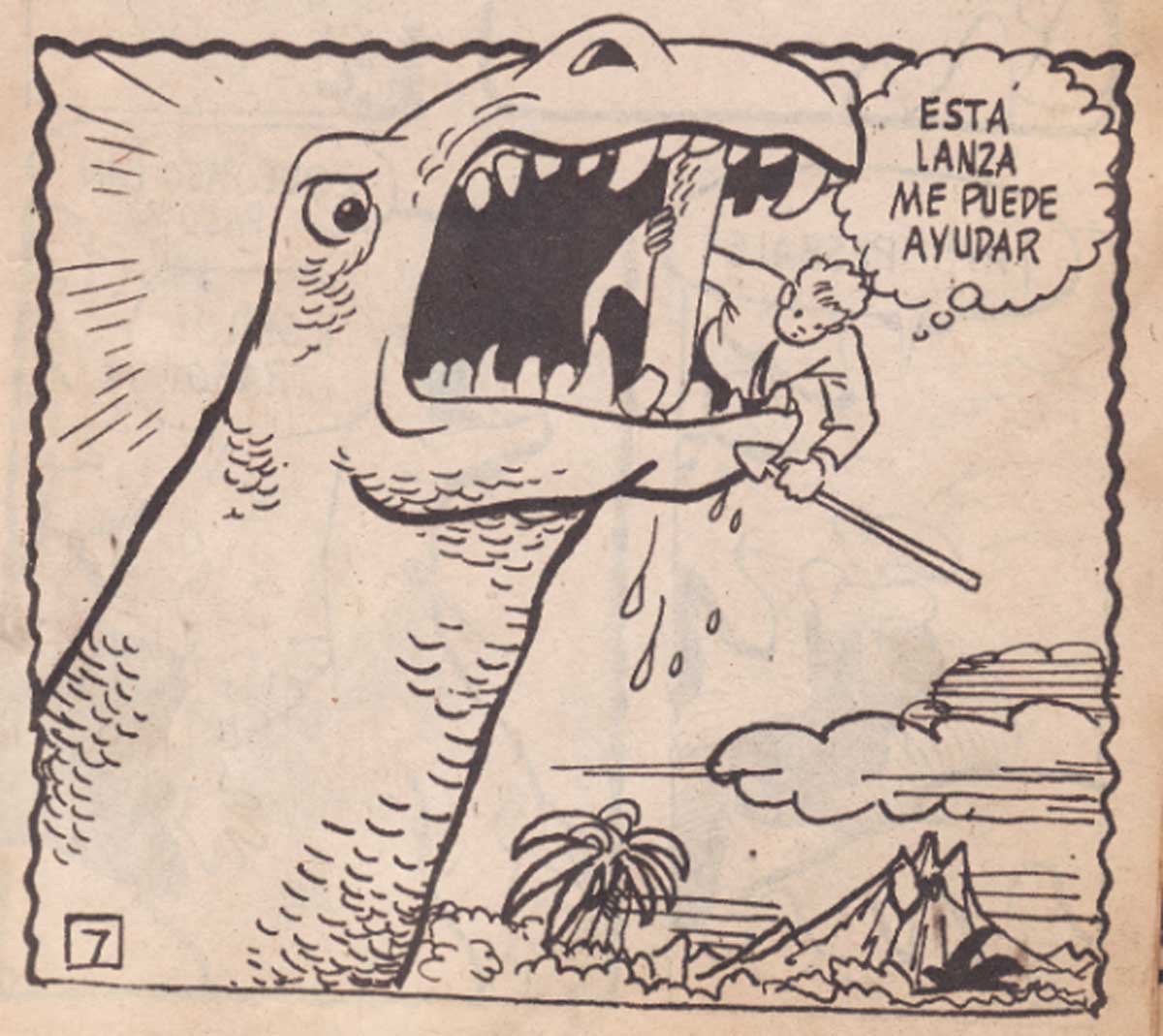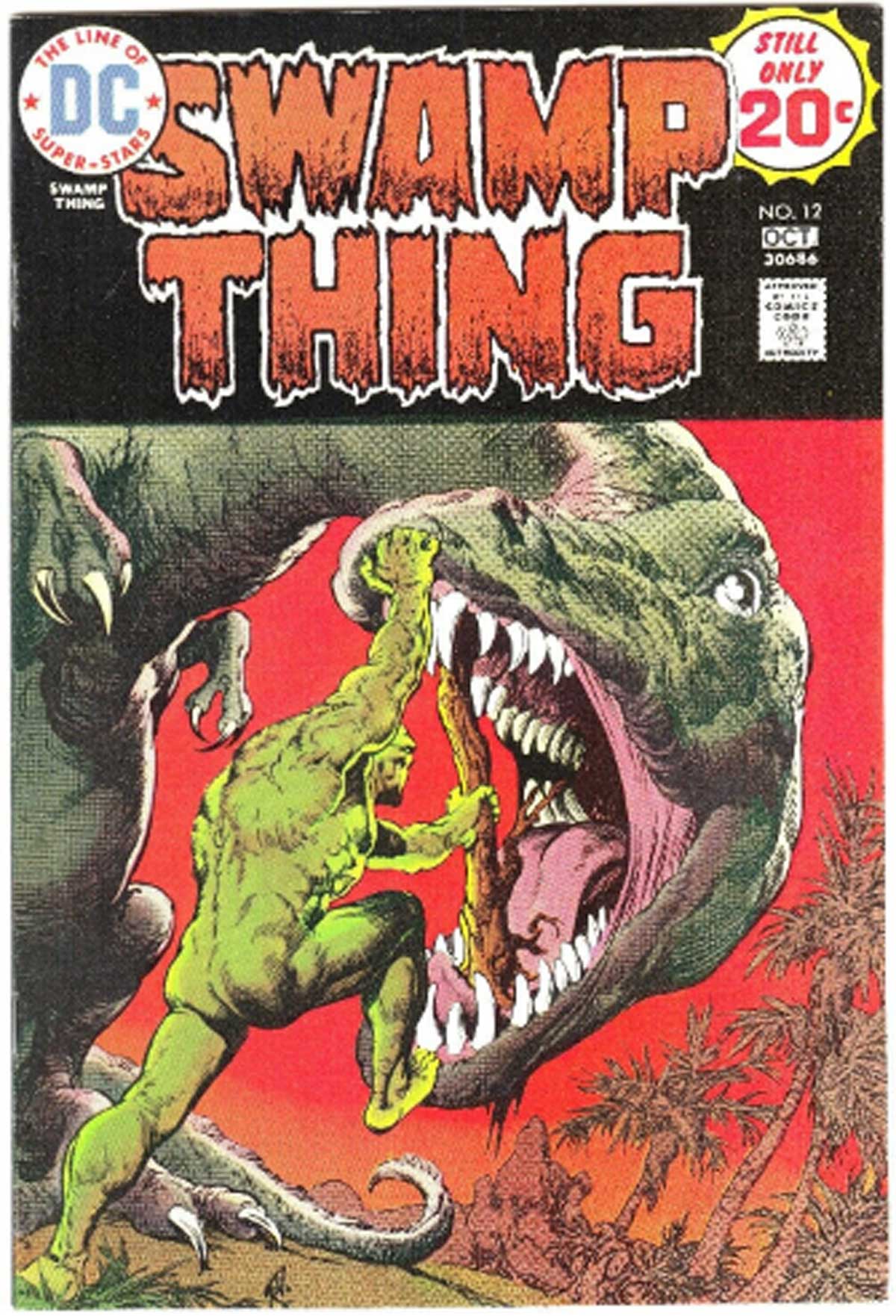We write this note as full-time researchers in different fields; one of us embedded in evolutionary biology, the other in interaction design and the humanities. Our common interests in the arts and popular culture brought us together nearly three decades ago, and those interests reunited us years later by serendipity. Serendipity ‘occurs when unexpected circumstances and an insightful ‘aha’ moment result in a valuable, unanticipated outcome’ (Makri and Blandford 2012). Over the years the two of us have shared uncountable ‘aha’ moments reading comics; as comics readers and collectors, personal experience and serendipity have led us to identify artwork in different comics that have strikingly similar elements. Umberto Eco refers to these as ‘isolated elements’ that reappear in the medium of comics more than once throughout time. Eco argues that these isolated elements are ‘fragmented projections of an original whole’; ‘secondary elements’ that eventually become essential to the medium of comics, and in fact become cult images in their own right, due to their recurrent reappearance through different reinterpretations (Eco 1995).
For Walter Benjamin, a certain ‘logic of form’ across artworks throughout history can reinforce the idea that the future and the present are also contained in the past; and that new technologies and art forms do not simply supersede previous and present ones: they depend on them (Benjamin 2005). In Benjamin’s words, ‘there is a secret agreement [Verabredung: also a meeting; an appointment] between past generations and the present one’ (Benjamin 2003). The concept of ‘logic of form’ can be helpful to name the sometimes unexplainable or apparently serendipitous common traits and genealogies that can be traced in the historical or comparative analysis of specific artworks such as different comics from different geographical, cultural and historical provenance, often resulting from very different local contexts.
Years before Benjamin, the architect William Lethaby introduced the concept of ‘universal architecture’. In 1918 he proposed ‘a morphology of building’ as a method to investigate ‘the great building types’ and ‘the elements of architecture’, imagining it as a ‘repository of inventions’ (Lethaby 1918; discussed in Garnham 1985). Benjamin’s ‘logic of form’ and Lethaby’s ‘morphology’ shared a preoccupation with artistic form as expressed by the repetition and rearticulation existing of types and patterns to create something new in different contexts.
How can we understand the phenomenon of a recurrent elements in comics? In architecture, design and the decorative arts, the use of analogies to conceptualise the evolution of artistic forms is not new (Steadman 2008). Although identifying ‘original’ elements in the first instance remains an unsolved problem in most definitions of analogies (Schlimm 2008), what we propose is that two different types of analogy can help us problematise, analyse or at least describe the phenomenon of isolated elements that are noticeably similar to other images or elements.
Linguistic Analogy
In the field of linguistics, analogy has been defined as ‘a change made by influence of another form in the same paradigm’ (Basilio 2006), and is used to show the change from the ‘before’ to the ‘after’ state (Nesset and Makarova 2014). Here we do not use the concept of linguistic analogy in the strict sense of studying the changes in the development of a language, but as the cognitive process that involves linking the information provided by two distinct elements by comparing their similarities (Fischer 2019). Hence, the creation of new forms or modifications in these elements could be interpreted as derivatives from the same root (Elvira 1998).
Consider the panel below from Love and Rockets by Jaime Hernandez (Figure 1). Hernandez has publicly acknowledged Stan Lee’s and Steve Ditko’s influence on his work (Hignite 2010). In this example we can see how isolated elements are also present in a panel by Ditko (Figure 2): the rain/water falling; the background/machinery have been recreated with noticeable modifications while making the reference detectable.
Hernandez, Jaime (w,p,i). Panel from Love and Rockets #48. 1995: 4:6. Seattle: Fantagraphics, Aug. 1995. © 1995 Jaime Hernandez.
Lee, Stan (w) and Ditko, Steve (p). Panel from Amazing Spider-Man #33. 1966: 3:1. New York: Marvel Comics, Feb. 1966. © Marvel Entertainment Group, Inc.
If a potential source and corresponding copy can be detected with a level of certainty from contextual documentary evidence (for example biographical or bibliographical sources), it should be possible to apply the concept of linguistic analogy to explain the phenomenon of recurrent images. According to Nesset and Makarova (2014) this is a principle of the linguistic analogy. We see in these examples the expression of, as Benjamin called it, ‘a secret agreement’ or meeting between a previous generation (Lee’s and Ditko’s) and a younger one (Hernandez’s).
Biological Analogy
In design and architecture, biological thinking has been used to explain the evolution of artistic forms since the 19th century (Steadman 2008). Unlike linguistic analogy, biological analogy (as known as ‘convergent evolution’) reveals that some structures have different evolutionary origins while performing the same role or function (Begon et al. 2006). In biology, an example of analogy can be found in the wings of bats and butterflies, which perform the same function but come from different evolutionary lines. We suggest that in comics a biological analogy can be inferred when similar graphic elements in an image are produced not intentionally but most possibly by mere chance or serendipity, performing the same function but having independent origins.
As an example of biological analogy in comics consider the panel (Figure 3) by Mexican comics artist Germán Butze (1912–1974) and, below, the panel (Figure 4) by Filipino artist Nestor Redondo (1928–1995).
Butze, Germán (w,p). Panel from Los Supersabios #229. 1973: 7:3. México: Joma. © Supersabios.
Wein, Len (w) and Redondo, Nestor (p). Cover of Swamp Thing #12. 1974. New York: DC Comics, Oct. 1974. © DC Comics.
As in biology, the common structures in the panels above fulfill a similar function (isolated elements; composition), but there is no evidence of a common origin. These authors worked indifferent publishing industries, genres, formats, countries and languages, and therefore made comics for largely different audiences. There is no documentary evidence —known to us at least— that might suggest that one of the two authors could have known of the other’s work. This makes it hard to establish a relationship between both panels by common ancestry, at least in terms of comics. Needless to say, the shared visual references might come from other pop culture media, such as fiction, film and TV. In this case a possible common reference could have been the silent film The Lost World (Hoyt, 1925), based on Arthur Conan Doyle’s 1912 novel, or for that matter any of the pre-1974 dinosaur films that followed it. The emphasis here however is in the lack of documentary evidence demonstrating that either or both artists were actually aware of the same specific references.
Conclusions
How to explain the recurrence of isolated elements in comic art when we have no evidence authors were aware of each other’s work? When documentary, contextual evidence fails, could we not go back to a notion akin to the collective unconscious to explain otherwise unexplainable commonalities? Carl Jung’s archetypes are ‘fantastic and dreamlike images’ that ‘correlate with special similarity universal patterns’ (Jung 2009). Archetypes are not inherited representations themselves, but ‘representations of inherited possibilities’, so an image can be represented and transformed in detail without losing its original meaning or essential pattern. We should be careful however to be autocritical about whose ‘origins’ we prioritise and take for granted as essential or shared. We recognise that the dominance, in some circles, of Angloamerican and European theories, and the over-representation of English-language and Western European comics in those studies, always-already present a collective bias that risks ignoring references and perspectives beyond those cultural and geographical interpretive frameworks. This note itself is an example of that, and we openly declare it as an important limitation. We therefore wonder about the possibilities of critiquing, decolonialising and mashing up Jung’s collective unconscious as a key component of imagination and creative practices such as comics, and therefore as a contributor to Lethaby’s ‘repository of inventions’. Benjamin’s ‘secret meeting’ between past generations and the present one’ could manifest itself as a representation of ‘inherited possibilities’ from a ‘common ancestry’, as the playful, often unconscious, yet intentional rearrangement, in a new work, of previous combinations. ‘The language of comics’ (Gubern, 1972; Groensteen, 1999) as both the result and the embodiment of a shared inheritance.
Like the images we have shown in this note, we have drawn from disparate theoretical sources to frame a possible heuristic approach to describing the phenomenon of recurrent images in comics. We suggest that Benjamin’s ‘logic of form’; Lethaby’s ‘morphology of building’ and ‘repository of inventions’; Eco’s typological reading of ‘the language of comics’; and Jung’s collective unconscious share a concern with the identity of artistic practice and aesthetic objects as the result of historical forces. The adoption, modification and critical interrogation of biological thinking and analogy in architecture and design in particular, require more detailed investigation that could prove fruitful in the study of comics.
In this note we have shared examples of comic art where we suggest the conceptual tools of linguistic and biological analogy can be used as components of a heuristic framework to explain them in their similarity to other images. The examples we have discussed are from print comics; their creation, distribution, discovery and consumption originally defined by pre-digital methods.
Online image search technologies pose different affordances and challenges. Computational methods, including machine learning, can assist in the detection of similar or identical images in large corpora (Nguyen, Rigaud, and Burie, 2018) but digitised corpora are woefully incomplete, and artificial intelligence cannot, so far, provide reliable evidence of ‘common ancestry’ or explicit authorial referential intent. The serendipitous nature of the analogue and analogical process behind our image selection suggests to us that the aesthetic experience in comic book reading in print is not only defined by the detection, identification and interpretation of particular elements, patterns or structures within individual texts or publications, but by the readers’ personal, intertextual temporal experience reading different individual instances of comics over time. For the time being, we hope that readers keep encountering those ‘aha’ moments, and wonder about how two disparate examples could share so much.
Acknowledgements
The authors would like to thank the Butze family for their kind permission to reuse Figure 3.
Editorial Note
Every effort has been made to trace copyright holders and to obtain their permission for the use of copyright material under educational fair use/dealing for the purpose and criticism and review. Full attribution and copyright information has been provided in the captions.
Competing Interests
The authors have no competing interests to declare. Ernesto Priego is an editor of The Comics Grid: Journal of Comics Scholarship. The editorial processes were managed by another editor and complied with the guidelines on ethical editing and research established by the Committee on Publishing Ethics (COPE) and the UK Research Integrity Office (UKRIO).
References
Basilio, M 2006 Metaphor and metonymy in word formation. DELTA: Documentação de Estudos em Lingüística Teórica e Aplicada, 22: 67–80. DOI: http://doi.org/10.1590/S0102-44502006000300006
Begon, M, Townsend C R and Harper J L 2006 Ecology, From individuals to ecosystems. Malden, MA, Blackwell Publishing.
Benjamin, A (ed.) 2005 Walter Benjamin and Art. London: Continuum.
Benjamin, W 2003 Walter Benjamin: Selected Writings, Volume 4: 1938–1940. In: Jennings, M W and Eiland, H (eds.). Cambridge, Mass. and London: Belknap Press of Harvard University Press.
Butze, G (w,p). Los Supersabios, #229. 1973 México: Joma.
Eco, U 1995 Apocalípticos e Integrados. México: Tusquets Fábula.
Elvira, J 1998 El Cambio Analógico. España: Gredos.
Fischer, O 2019 Analogy in Language and Linguistics. Available at: https://www.oxfordbibliographies.com/view/document/obo-9780199772810/obo-9780199772810-0238.xml. [Last accessed 12 May 2021]. DOI: http://doi.org/10.1093/obo/9780199772810-0238
Garnham, T 1985 ‘William Lethaby and the Two Ways of Building’. AA Files No. 10 (Autumn 1985), pp. 27–43. Architectural Association School of Architecture. Available from https://www.jstor.org/stable/29543471.
Groensteen, T 1999 Systeme de la bande dessinée. Paris: Presses Universitaires de France.
Gubern, R 1972 El lenguaje de los cómics. Barcelona: Península.
Hernandez, J (w,p,i). Bob Richardson. Love and Rockets. #13. 1995 Seattle: Fantagraphics.
Hignite, T 2010 The Art of Jaime Hernandez: The Secrets of Life and Death. New York, Abrams ComicsArts.
Hoyt, H 1925 The Lost World. Film. First National Pictures.
Jung, C G 2009 Arquetipos e inconsciente colectivo, Madrid, Paidós.
Lee, S (w) and Ditko, S (p). The Final Chapter. Amazing Spider-Man. #33. Feb. 1966 New York: Marvel Comics.
Lethaby, W 1918 ‘Morphology, Types and Classification’. The Builder, 1 November 2018.
Makri, S and Blandford, A 2012 Coming Across Information Serendipitously: Part 2–A Classification Framework. Journal of Documentation, 68(5): 706–724. DOI: http://doi.org/10.1108/00220411211256049
Nesset, T and Makarova, A 2014 Testing the Semantic Homogeneity Constraint: Analogical change and Russian verbs. Journal of Historical Linguistics, 4(2): 161–191. DOI: http://doi.org/10.1075/jhl.4.2.01nes
Nguyen, N V, Rigaud, C and Burie, J C 2018 ‘Digital Comics Image Indexing Based on Deep Learning’. Journal of Imaging, 4: 89. DOI: http://doi.org/10.3390/jimaging4070089
Schlimm, D 2008 ‘Two Ways of Analogy: Extending the Study of Analogies to Mathematical Domains’, Philosophy of Science, 75(2): 178–200. [Online]. DOI: http://doi.org/10.1086/590198
Steadman, P 2008 The Evolution of Designs. Biological Analogy in Architecture and the Applied Arts. Routledge.
Wein, L (w) and Redondo, N (p). The Eternity Man. Swamp Thing #12. 1974 New York: DC Comics.




